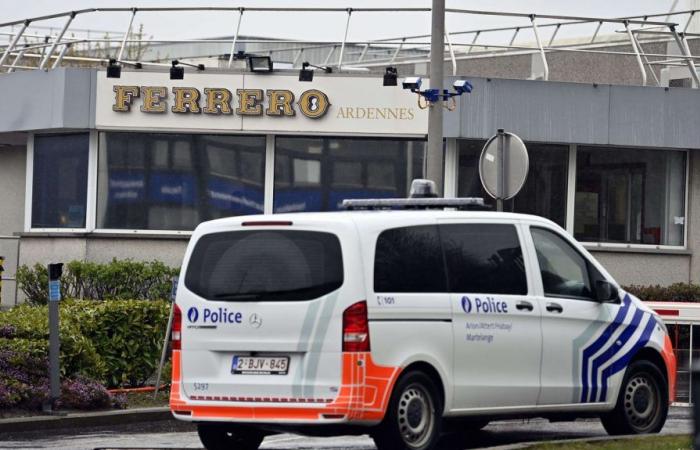In 2022, the Italian group had only mentioned one episode of contamination in its Belgian factory in Arlon. In fact, more than 80 samples tested positive in two months, according to an unnoticed report.
“We’re sorry.” On May 25, 2022, in front of the readers of Parisianthe French general manager of Ferrero breaks his silence. The Italian group, known for its Nutella, Kinder and Crunch brands, has been in turmoil for two months. Hundreds of European children have fallen ill after eating Kinder chocolates contaminated with salmonella. In France alone, 81 cases have been recorded, including 22 requiring hospitalization. Ultimately, some 400 patients will be identified, including 121 in France, with no deaths reported. “What happened is not acceptable”recognizes the leader, Nicolas Neykov.
The boss of the French branch of Ferrero promises transparency. “Everything I know, I will tell you. (…) There has never been any deception or desire to hide the truth”he assures. Asked about the origin of the contamination, he then reported a detection of salmonella in the Ferrero factory in Arlon, Belgium, on December 15, 2021. A few weeks earlier, at the beginning of April, a press release from the group did not mention already this alert, dated December 15.
Have traces of salmonella been found in the factory at other times? The general manager suggests that this is an isolated case. “All of our tests carried out over the following days were negative, which then allowed us to reopen the factory”he assures. “We are working hard to ensure that this never happens again.”he adds again. On this day of transparency operation, the French boss of Ferrero neglects to specify that “that” has already happened again. Dozens of times.
Two and a half years later, “Complement of investigation” reveals for the first time to the general public the extent of the contaminations, thanks to a document that has until now passed under the radar. In its report entitled “Ferrero: the little secrets of the chocolate giant”, broadcast Thursday October 17 at 10:45 p.m. on France 2, the magazine shows how the European health authorities undermined the company’s version in a report published on May 18, 2022, one week before the interview with Nicolas Neykov.
“A total of 81 samples” from the Belgian factory tested positive for salmonella “over a two-month production period between December 3, 2021 and January 25, 2022”it is revealed in this epidemic assessment, signed by the European Center for Disease Prevention and Control (ECDC) and the European Food Safety Authority (EFSA). Online in English on the ECDC website (PDF)this publication was only spotted at the time by specialized sites such as Food Process and Food Safety News. As early as April 12, a first report had already mentioned samples having turned out to be positive in January.
All these results come from self-sanitary checks carried out by the Ferrero group itself on finished products, raw materials and even production tools. A first positive result on a sample dated December 3; four more on the 13th; five on the 14th… The alerts continued on December 15, 16, 18, 20. Production, stopped on December 16, was restarted on January 3. A sample collected that same day came back positive and the list grew ever longer. In total, 21 days are punctuated by anomalies, or 20 more than in the official speech of the Italian food giant, according to which the tests turned out to be negative after mid-December.
Despite major disinfection operations in Arlon, other cases were discovered in the following months. At the beginning of April, when the contaminated chocolate scandal broke, the Belgian health authorities launched an inspection of the factory. For nine days, they controlled the site from top to bottom. “We took a whole series of samples and we had seven initial positive results for salmonella,” details the Belgian Agency for the Safety of the Food Chain in “Additional Investigation”. “The investigation got carried away, until we reached April 8, when we decided to recall all the products manufactured in the factory” and close the site.
Does the Ferrero group recognize this avalanche of positive tests? Asked by “Additional investigation”, he contented himself with a vague response: “Prior to the withdrawal of the product in April 2022, as part of our control systems, the presence of salmonella was detected at the Arlon site in Belgium.” During this crisis, “All batches of products have been rigorously tested before being released to the market”adds Ferrero, without explaining how contaminated products could end up on the shelves of around fifteen European countries, as well as in Canada and the United States.
It also remains to be determined whether the company failed to fulfill its health alert obligations. In Belgium, if it considers that there is no danger for consumers, a manufacturer is not obliged to notify the authorities in the event of an incident. Was the Ferrero group in this situation? “If we look at the end of the story, on the basis of all the elements available to us after several weeks of investigation, we can say that there was an obligation to notify”estimates the Belgian Agency for the Safety of the Food Chain. Before qualifying.
“It is the legal procedure which will determine whether or not they failed to comply with this notification obligation.”
Aline Van den Broeck, spokesperson for the Belgian Agency for the Safety of the Food Chainto “Further investigation”
For its part, the company claims to have, “from the beginning”, “collaborated fully with health and food safety authorities”. In April 2022, however, she recognized “internal failures, causing delays in information retrieval and sharing”. The case is currently being investigated in Belgium to determine the responsibilities of the Italian group. In France, a preliminary investigation is also opened, following a complaint for “aggravated deception” and “endangering others” filed by several victims’ families with the NGO Foodwatch.
While awaiting a possible trial, Ferrero has already negotiated with parents of infected French children. To avoid a long and uncertain legal procedure, some have accepted financial compensation, in exchange for a confidentiality clause and a renunciation of any legal action. “We obtained roughly between 10,000 and 20,000 euros” by family, reports their advisor, Jérémy Kalfon, in the show. The industrialist finds it in his interest, the lawyer recognizes: “The day there is a trial, the fewer families there are, the less resounding it will be.”






